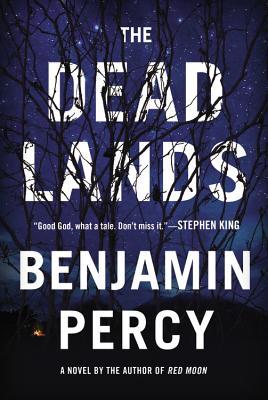
 The Mystery Writers of America announced the 2015 winners of the prestigious Edgar Allan Poe Awards tonight at their annual banquet in New York City. These awards honor "the best in mystery fiction, nonfiction and television published or produced in 2014."
The Mystery Writers of America announced the 2015 winners of the prestigious Edgar Allan Poe Awards tonight at their annual banquet in New York City. These awards honor "the best in mystery fiction, nonfiction and television published or produced in 2014."The 2015 nominees, with the winners announced tonight in red, are shown below. For more information about the history of the Edgars, the honorary awards, the category rules, and a searchable data base for past nominees and winners, see here.
Best Novel (hardbound only)
Wiley Cash: This Dark Road to Mercy (William Morrow)
Mo Hayder: Wolf (Grove/Atlantic)
Stephen King: Mr. Mercedes (Scribner)
Stuart Neville: The Final Silence (Soho Press)
Ian Rankin: Saints of the Shadow Bible (Little, Brown)
Karin Slaughter: Coptown (Delacorte Press)
Best First Novel by an American Author (hardbound, paperback or e-book original)
Tom Bouman: Dry Bones in the Valley (W. W. Norton)
Julia Dahl: Invisible City (Minotaur Books)
Allen Eskens: The Life We Bury (Seventh Street Books)
C. B. McKenzie: Bad Country (Minotaur Books/Thomas Dunne)
Adam Sternbergh: Shovel Ready (Crown Publishers)
Ashley Weaver: Murder at the Brightwell (Minotaur Books/Thomas Dunne)
Best Paperback or E-Book Original
Chris Abani: The Secret History of Las Vegas (Penguin Books)
Alison Gaylin: Stay With Me (William Morrow)
William Lashner: The Barkeep (Amazon/Thomas and Mercer)
Catriona McPherson: The Day She Died (Midnight Ink)
Lisa Turner: The Gone Dead Train (William Morrow)
Ben H. Winters: World of Trouble (Quirk Books)
Best Fact Crime (hardbound, paperback or e-book nonfiction)
Kevin Cook: Kitty Genovese: The Murder, the Bystanders, the Crime that Changed America (W.W. Norton)
Carl Hoffman: The Savage Harvest: A Tale of Cannibals, Colonialism, and Michael Rockefeller's Tragic Quest for Primitive Art (William Morrow)
Lacy M. Johnson: The Other Side: A Memoir (Tin House Books)
William Mann: Tinseltown: Murder, Morphine, and Madness at the Dawn of Hollywood (Harper)
Harold Schechter: The Mad Sculptor: The Maniac, the Model, and the Murder that Shook the Nation (Amazon/New Harvest)
Best Critical/Biographical (hardbound, paperback or e-book)
Charles Brownson: The Figure of the Detective: A Literary History and Analysis (McFarland & Company)
Jim Mancall: James Ellroy: A Companion to the Mystery Fiction (McFarland)
Robert Miklitsch: Kiss the Blood Off My Hands: Classic Film Noir (University of Illinois Press)
Francis M. Nevins: Judges & Justice & Lawyers & Law: Exploring the Legal Dimensions of Fiction and Film (Perfect Crime Books)
J. W. Ocker: Poe-Land: The Hallowed Haunts of Edgar Allan Poe (W. W. Norton)
Best Short Story (from magazines, periodicals, e-zines, or book-length anthologies, 1,000 to 22,000 words)
Doug Allyn: "The Snow Angel," Ellery Queen Mystery Magazine (Dell Magazines)
John Floyd: "200 Feet," Strand Magazine (The Strand)
Gillian Flynn: "What Do You Do?," Rogues, anthology edited by George R. R. Martin and Gardner Dozois (Bantam Books)
Dennis Lehane vs. Michael Connelly: "Red Eye," FaceOff, anthology edited by David Baldacci (Simon & Schuster)
Brian Tobin: "Teddy," Ellery Queen Mystery Magazine (Dell Magazines)
Best Juvenile Mystery (hardbound or paperback, for ages 5-11)
Heather Vogel Frederick: Absolutely Truly (Simon & Schuster Books for Young Readers)
Stuart Gibbs: Space Case (Simon & Schuster Books for Young Readers)
Kate Milford: Greenglass House (Clarion Books/Houghton Mifflin Harcourt Books for Young Readers)
"Science Bob" Pflugfelder and Steve Hockensmith: Nick and Tesla's Super-Cyborg Gadget Glove (Quirk Books)
N. H. Senzai: Saving Kabul Corner (Simon & Schuster/Paula Wiseman Books)
Marcia Wells: Eddie Red, Undercover: Mystery on Museum Mile (Houghton Mifflin Harcourt Books for Young Readers)
Best Young Adult Mystery (hardbound or paperback, for ages 12 -18)
Paolo Bacigulupi: The Doubt Factory (Little, Brown Books for Young Readers)
Elle Cosimano: Nearly Gone (Penguin Young Readers Group/Kathy Dawson Books)
Lamar Giles: Fake ID (HarperCollins Children's Books/Amistad)
James Klise: The Art of Secrets (Algonquin Young Readers)
Blake Nelson: The Prince of Venice Beach (Little, Brown Books for Young Readers)
Best TV Episode Teleplay
"The Empty Hearse," Sherlock, teleplay by Mark Gatiss (Hartswood Films/Masterpiece)
"Unfinished Business," Blue Bloods, teleplay by Siobhan Byrne O'Connor (CBS)
"Episode 1," Happy Valley, teleplay by Sally Wainwright (Netflix)
"Dream Baby Dream," The Killing, teleplay by Sean Whitesell (Netflix)
"Episode 6," The Game, teleplay by Toby Whithouse (BBC America)
Mary Higgins Clark Award (The winner is selected by a special Mystery Writers of America committee for the book "most closely written in the Mary Higgins Clark tradition." See Note below.)
Sharon Bolton: A Dark and Twisted Tide (Minotaur Books)
Jane Casey: The Stranger You Know (Minotaur Books)
Julia Dahl: Invisible City (Minotaur Books)
Julia Keller: Summer of the Dead (Minotaur Books)
Lori Rader-Day: The Black Hour (Prometheus Books/Seventh Street Books)
Robert L. Fish Memorial Award
"Getaway Girl," by Zoë Z. Dean, Ellery Queen Mystery Magazine (Dell Magazines)
"Getaway Girl," by Zoë Z. Dean, Ellery Queen Mystery Magazine (Dell Magazines)
Grand Masters
Lois Duncan
James Ellroy
Lois Duncan
James Ellroy
Raven Recipients
Jon and Ruth Jordan
Kathryn Kennison
Jon and Ruth Jordan
Kathryn Kennison
Ellery Queen Award
Charles Ardai
Charles Ardai
Congratulations to the nominees and winners!
Note: The guidelines set forth by Mary Higgins Clark for the Mary Higgins Clark Award are as follows:
"The protagonist is a nice young woman whose life is suddenly invaded.
She’s self-made and independent, with primarily good family relationships.
She has an interesting job.
She is not looking for trouble–-she is doing exactly what she should be doing and something cuts across her bow.
She solves her problem by her own courage and intelligence.
The story has no on-scene violence.
The story has no strong four-letter words or explicit sex scenes."





